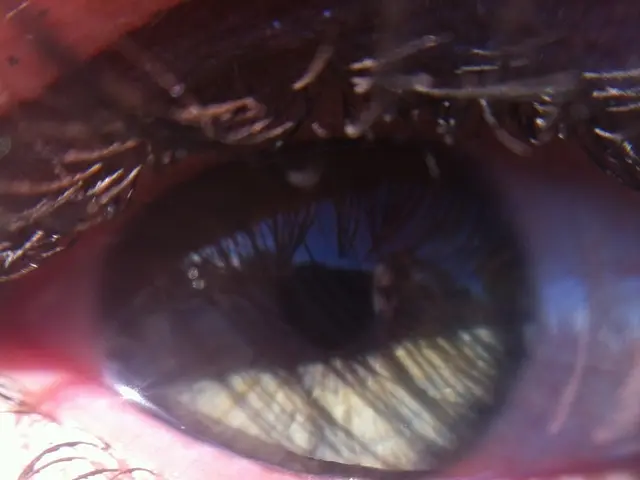Kneecap Disorder: Causes, Treatments, and Further Insights
In some rare instances, a person may experience effusion of the knee - the gathering of fluid in the knee joint, leading to swelling. This condition, known as Chondromalacia patella, occurs when the cartilage on the underside of the kneecap breaks down, causing inflammation and pain [1].
Chondromalacia patella can develop due to various factors, such as poor structural alignment, muscle weakness, overuse in sports, traumatic injury, or even hereditary health conditions [2]. It's important to note that if a person experiences knee pain for an extended period, they should seek advice from their doctor [3].
Common treatments for Chondromalacia patella primarily focus on conservative, nonsurgical methods. These methods aim to reduce pain, inflammation, and improve knee function [4].
Rest and activity modification are crucial. Avoiding high-impact activities that stress the patella, such as jumping, running, and deep squatting, can help reduce symptoms and prevent further damage [2][4].
Ice and heat therapy also play a significant role. Applying ice to reduce inflammation and pain, and heat to relax muscles and improve blood flow, can provide relief [2][4].
Nonsteroidal anti-inflammatory drugs (NSAIDs) like ibuprofen, naproxen, or aspirin can alleviate pain and swelling [1][2][4].
Physical therapy and exercises are key components of treatment. Targeted exercises to strengthen the quadriceps, hamstrings, and hip muscles, enhancing patellar alignment and knee stability, are beneficial [1][2][3][4]. Stretching tight muscles and improving overall knee mobility are also important [1][2][3][4].
Supportive devices, such as bracing, patellar straps, or custom shoe inserts, can stabilize the patella and relieve discomfort during movements [2][4].
For overweight individuals, even modest weight loss can reduce knee joint stress and improve symptoms [1].
In cases where conservative treatment fails or the condition is severe, surgical options like arthroscopic surgery to remove damaged cartilage or realign the patella may be considered [2]. However, these are less common and typically reserved for advanced or persistent cases [3].
In conclusion, the most common and effective approach to managing Chondromalacia patella involves a combination of rest, medication, physical therapy, and activity modification, with surgery as a last resort [1][2][3][4]. Chondromalacia most often causes a person to experience dull, aching pains in the front of the knee. It's essential to seek medical advice if these symptoms persist.
References: 1. Mayo Clinic. (2021). Chondromalacia patella. https://www.mayoclinic.org/diseases-conditions/chondromalacia-patella/diagnosis-treatment/drc-20374928 2. American Academy of Orthopaedic Surgeons. (2021). Chondromalacia patella. https://orthoinfo.aaos.org/en/diseases--conditions/chondromalacia-patella 3. Cleveland Clinic. (2021). Chondromalacia patella. https://my.clevelandclinic.org/health/diseases/16797-chondromalacia-patella 4. Johns Hopkins Medicine. (2021). Chondromalacia patella. https://www.hopkinsmedicine.org/health/conditions-and-diseases/chondromalacia-patella
- Chondromalacia patella is a condition that can lead to swelling in the knee joint due to the gathering of fluid, often causing dull, aching pains.
- It's crucial to note that if a person experiences persistent knee pain, they should seek medical advice to rule out any chronic diseases like arthritis, HIV, or other medical conditions.
- science has identified various factors that contribute to Chondromalacia patella, such as poor structural alignment, muscle weakness, sports overuse, traumatic injury, and even hereditary health conditions.
- Common treatments for Chondromalacia patella include rest, activity modification, ice and heat therapy, NSAIDs, physical therapy, and the use of supportive devices.
- For those who are overweight, even modest weight loss can reduce knee joint stress and improve Chondromalacia patella symptoms.
- In some cases, if conservative treatment fails or the condition is severe, surgical options like arthroscopic surgery may be considered.
- Dermatitis, depression, migraine, and ulcerative colitis, among other chronic diseases, are not typically related to Chondromalacia patella but are significant topics in the field of health and wellness.
- Atopic conditions, such as eczema or hay fever, are distinct from Chondromalacia patella, but they are important in the science of understanding various medical conditions and their treatments.




